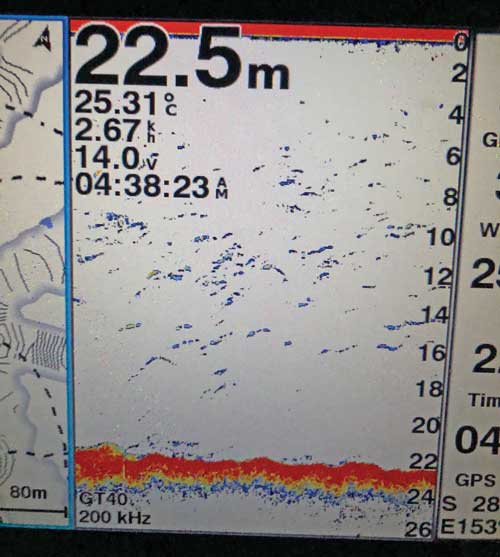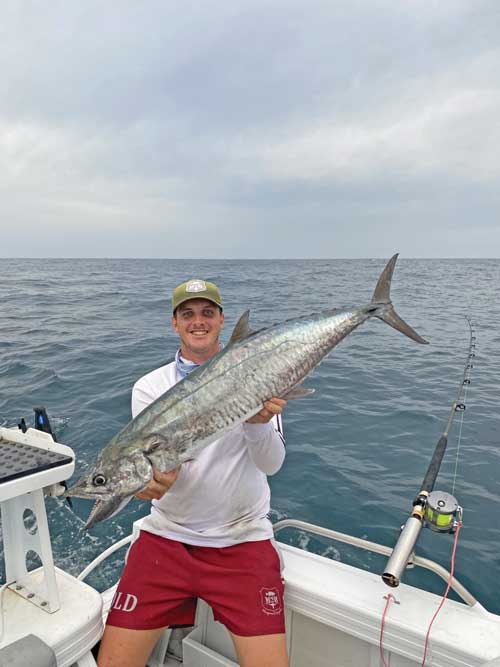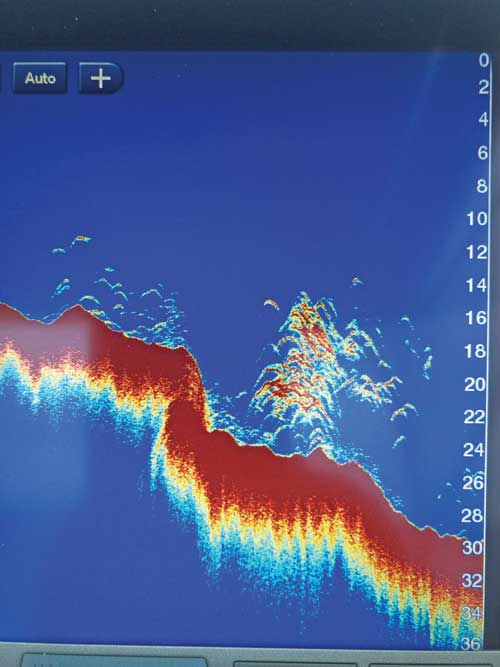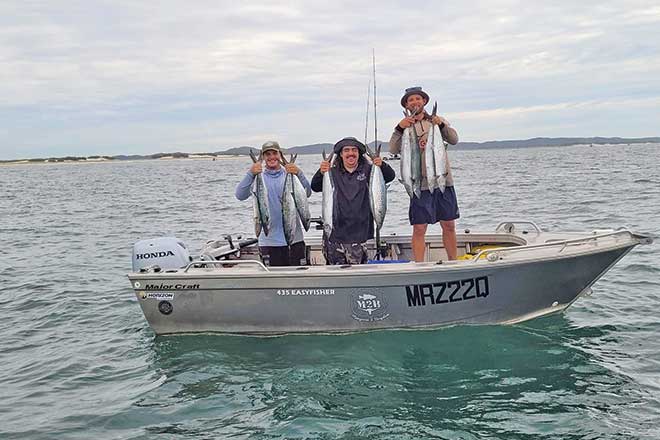G’day everyone, I hope you found my previous article useful in trying to get yourself onto a spanish mackerel or two.
As most of you would know, we have two separate closures for Queensland tidal systems – one was February 1-21 and the second closure starts March 1, finishing March 21.
Up until this point, I’d been right into the spanish that were out the front of my local reef.
It has been fishing exceptionally well this whole season, with fish schooled up and holding on local reefs consistently for a while now.
Something that helped this season was spending time finding the schools of mackerel and then dropping either a bait or a lure to them.
Lately, I have been towing livies for spaniards and have come up trumps – with big spotted all the way to good-sized spanish smacking them.

When sounding around, I look for a variety of things.
The first being bait, which in my opinion is the most important.
Second is the mackerel – you can easily identify them by how they are marking.
If you’re seeing a large school of fish showing up as squiggles all over the screen, then you have found your school of mackerel.
Thirdly, if you can see that the fish are stacked on either a rock, ledge or even a channel in the reef, these spots will be your best chance of landing your target.
Whether you are going to anchor, drift or tow, you will want to know everything.
When on Palm Beach Reef, anchoring in large crowds can be very efficient if you have a school of fish or bait below you.

Early in the morning, you’ll find that you can only sound up bait, which is perfect – a bonus is if the mackerel are already on top.
A big obstacle is current.
If you have wind against current, it can make managing your bait properly and catching fish very difficult.
Or if the current is running too much, it can force your bait to the surface, which is very challenging for any fisho.
A major tip is to constantly berley as soon as you’re anchored when targeting spotted mackerel.
If you can keep the school at or around your boat, you’ll be in for one hell of a day.
You’ll find that the boats anchored around you will struggle to catch fish.
This is because you basically have control of the school, which is so zoned into the berley you’re throwing into the water, they won’t move for anything.
If you have been fishing Palm Beach or Mermaid reefs long enough, you will know how this feels and, no matter what you do, the fish will not budge until the person has moved or bagged out.
On another note, as always Mermaid Reef has started to fire up towards the end of the season and you’ll find Palm Beach Reef will start to die down.

I’m still yet to figure out why the fish swap reefs, but they do – whether they are schools starting to migrate back north or different schools still making their way south.
Either way, it’s good for everyone because they are usually very thick, with most fishos being able to get stuck in and take a feed home.
I had a fairly good session recently, as opposed to others out there.
Back at the ramp, I spotted two younger males on a jet ski and got talking to them.
They mentioned that all they were able to catch were mack tuna and bonito.
On hearing that, I immediately offered them two of my mackerel because I had ample – to see their faces light up with excitement made my morning.
Of course, when I got home, my immediate thought was that I should have taken a photo of the young anglers – oh well, next time.
About this time in the season, the spanish at Tweed and Brunswick heads will really start to thicken up, pushing to the 12kg mark and above.
This is very common around these areas, particularly now with the closed season.
You’ll find Tweed will be very busy, as many Queenslanders will venture south in order to get themselves some spanish mackerel, if the spotted mackerel decide to vanish without a trace.
If you aren’t into the mackerel fishing as much, there have been reports of huge numbers of snapper still on the bite out in the deeper areas off the Seaway and Jumpinpin.
If there isn’t much current, the perfect idea is to venture out and get some summer snapper for a bit of a change.
On a recent trip out to the 50s, there was barely any current and the snapper were right up in the mid-water column, so out came the float-lining gear and up came the snapper and pearl perch.
That’s about all I’ve got for this month.
I hope you’ve found some of this information useful and that it will help you land a few more mackerel.
Cheers!
 Bush ‘n Beach Fishing Magazine Location reports & tips for fishing, boating, camping, kayaking, 4WDing in Queensland and Northern NSW
Bush ‘n Beach Fishing Magazine Location reports & tips for fishing, boating, camping, kayaking, 4WDing in Queensland and Northern NSW









